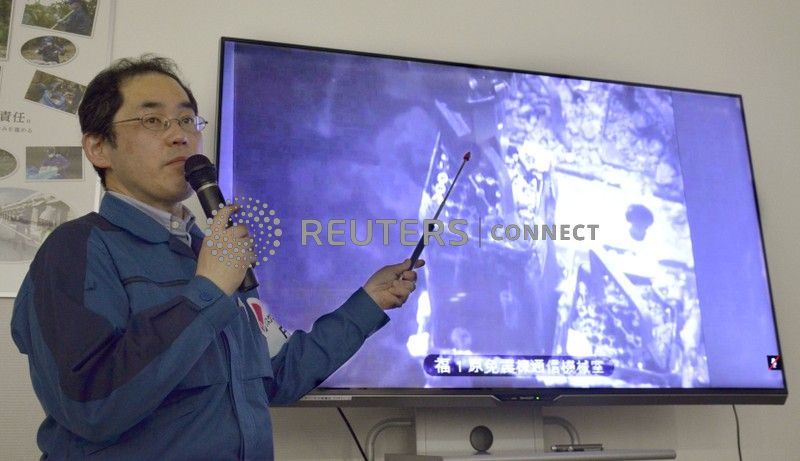TOKYO (Reuters) – Tokyo Electric Power has begun removing spent nuclear fuel rods from a second building at the wrecked Fukushima plant, using remote-controlled cranes to lift hundreds of radioactive cylinders from a highly contaminated reactor site.
The company, known as Tepco, said on Monday that it had successfully removed the first of more than 560 fuel rod assemblies by 0051 GMT from the No. 3 reactor and placed it in a specially designed steel cask for transfer to the ground.
The reactor was one of three reactors at Fukushima that suffered meltdowns after a 2011 earthquake and tsunami shut down the plant’s cooling systems.
In 2014, Tepco finished the removal fuel rods from the No. 4 reactor. However, the removal operation for the No. 3 site will be much more difficult because of the damage it suffered in the 2011 disaster, with an explosion covering the pool where the rods currently sit in debris, including a crane.
The damage and debris removal delayed the No. 3 operations for four years. Additionally, the highly irradiated air around the site means all the cranes moving the transportation casks carrying the rods, which weigh abut 45 tonnes, must be operated remotely.
Tepco must pluck the brittle and potentially damaged assemblies from a flooded compartment on the reactor site that is 18 meters (60 feet) above ground level and place them in containment casks, raise the casks from the pool and place them on a truck on the ground to transport them to a final pool of water for storage.
If the rods are exposed to air or if they break, radioactive gases could be released into the atmosphere.
“The work is expected to completed in March 2021, but safety is our first priority,” spokesman Joji Hara told Reuters.
The 2011 disaster forced 160,000 people to evacuate areas nearby the Fukushima plant, and many of them have never returned to the most contaminated areas.
Japan’s government estimated in 2016 that the total cost of dismantling Fukushima, decontaminating the affected areas, and paying compensation would amount to 21.5 trillion yen ($192 billion), around 20 percent of the country’s annual budget.
Even with the successful transfer of the fuel rods, Tepco faces other problems at Fukushima.
Tepco has struggled for more than eight years with rising levels of contaminated water that comes from its jerry-rigged cooling system for the melted reactor cores, in addition to power failures and water leaks. Last year, Tepco said a system meant to purify contaminated water had failed to remove dangerous radioactive contaminants, setting back efforts to deal with the water that is piling up in tanks covering the site.




